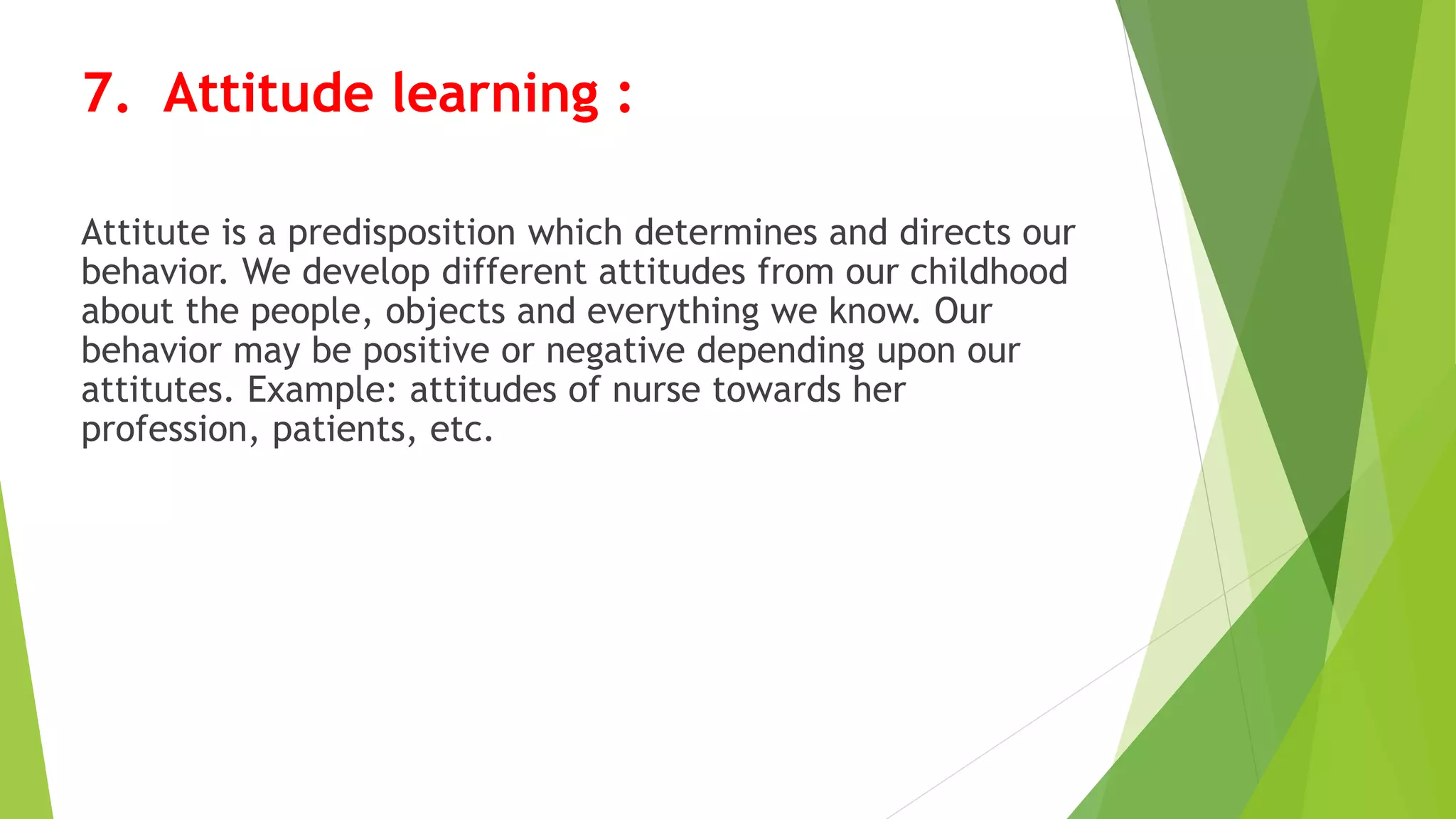This document discusses learning, including definitions of learning, the nature and characteristics of learning, types of learning, and factors that influence learning. It defines learning as a change in behavior or acquisition of knowledge through experience or practice. It describes several types of learning, including motor, verbal, concept, discrimination, and attitude learning. Factors that influence learning include learner factors like health and motivation, teacher factors like subject mastery and personality, and content factors like nature and organization. The role of the teacher is to take a humanistic approach and motivate learners, while the role of the school is to provide a conducive learning environment.



















